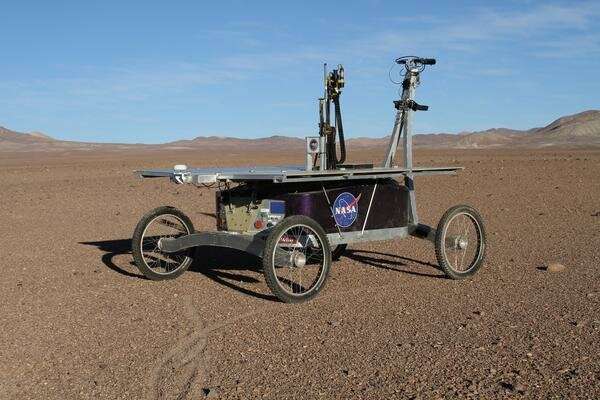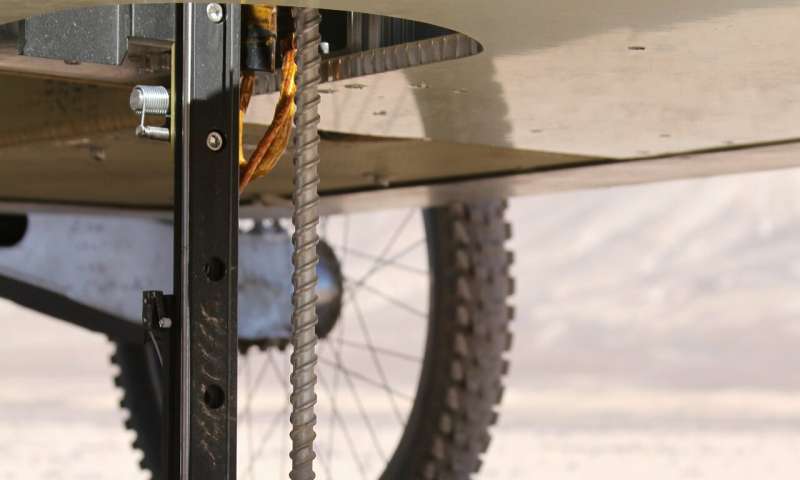
A rover trial mission drilled 80 cm below the surface of the Atacama desert and found unusual organisms. Credit: Stephen B. Pointing.
The Atacama Desert in Chile is not only the driest but also the oldest desert on Earth. It’s so dry that in some parts — like its hyper-arid core — there has been no recorded rainfall for hundreds of years. What’s more, the soil is very salty and exposed to high doses of UV radiation. That all sounds a lot like Mars, and, for years, NASA has been testing many of its emerging technologies here before deploying them in the field, on the red planet.
One of the most recent of such missions deployed a robotic rover to the desert, where it sampled subsurface soil and discovered unusual microbes. The life forms found in the samples were sparsely distributed due to low water and nutrient availability, but also because of the soil’s unique chemistry.
“We have shown that a robotic rover can recover subsurface soil in the most Mars-like desert on Earth,” Stephen Pointing, a Professor at Yale-NUS College, Singapore, who led the study, said in a statement. “This is important because most scientists agree that any life on Mars would have to occur below the surface to escape the harsh surface conditions where high radiation, low temperature and lack of water make life unlikely.”
In just a year, in 2020, both NASA and the European Space Agency (ESA) will start deploying rovers on the surface of Mars. Their mission will be to look for evidence of past or present life, which means drilling to significant depth beneath the surface.
The autonomous rover deployed in the Atacama Desert successfully drilled down to a depth of 80cm to recover sediment samples. These samples were compared to those carefully collected by hand. Researchers used DNA sequencing to study the microbes found in the samples, finding that both sets contained very similar organisms.
“We found microbes adapted to high salt levels, similar to what may be expected in the Martian subsurface. These microbes are very different from those previously known to occur on the surface of deserts,” Pointing said.
According to the authors, if there’s any microbial life on Mars, it will likely exhibit similar characteristics to that found in Earth’s most extreme habitats. Patchiness is one such characteristic, which means that detection will prove to be challenging. In fact, previous research was unable to recover DNA from any depth of Atacama’s hyper-arid core, suggesting that it was lifeless. The findings show that there is indeed life even in such an inhospitable environment — you just have use very sensitive tools to find it.
In the future, researchers plan on drilling even deeper to see just how far down microbes can go in one of the most inhospitable places on Earth.
Finding life on Mars — if there’s any at all — won’t be a piece of cake. It was challenging enough detecting organisms in the Atacama, which is teeming with life on its surface despite the inhospitable conditions. Another limitation is that DNA sequencing was performed in the lab with sophisticated methods. On Mars, it will have to be done on-site by the rover which presents its own unique set of technical challenges.
“Mars missions hope to drill to approximately 2m and so having an Earth-based comparison will help identify potential problems and the interpretation of results once rovers are deployed there. Ecological studies that help us predict the habitable areas for microbial communities in Earth’s most extreme environments will also be critical to finding life on other planets,” Pointing said.
The findings appeared in the journal Frontiers in Microbiology.










